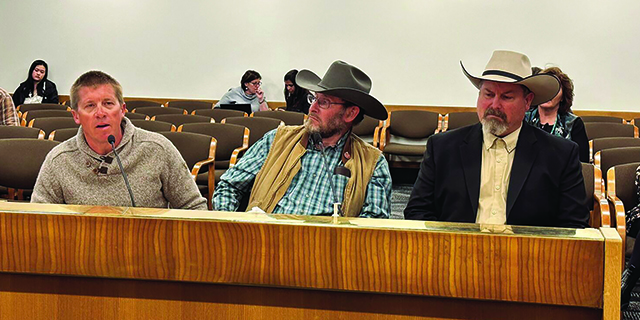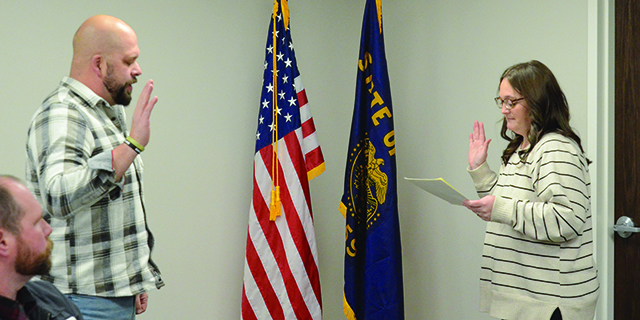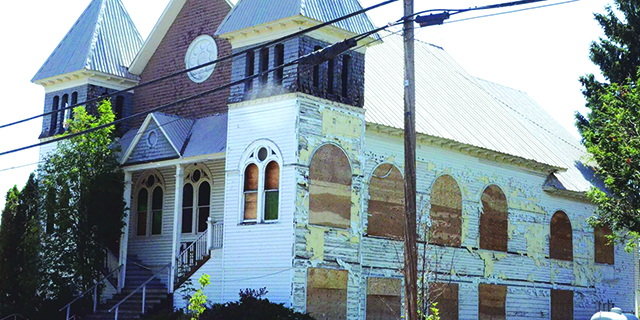The Core Path …: Smohalla’s Revenge – a White Man’s Ghost Dance
Published 5:00 pm Wednesday, July 19, 2006
When the scattered Nez Perce finally return to Wallowa this weekend to celebrate Tamkaliks, Chief Joseph won’t be the only one smiling upon the event from the Otherworld. Perhaps the one with the biggest grin of all will be Smohalla, the dreamer-prophet of the Wanapams.
Smohalla was from a long line of shamans near what is now Wallula, Wash, and as a youth he did his vision quest on the sacred mountain La Lac.
Trending
American Indians all across the region, including people from Joseph’s band, flocked to listen to the hump-backed prophet with an unusually large head. One could even say it was the drummer-dreamer teachings of Smohalla that inspired Young Chief to resist the Christianization of his people. (Aside from the treachery involved with the 1855 treaty, of course).
With a passionate zeal, Smohalla taught that if the people remained true to the ways of their ancestors, the dead would return and help them to drive out the white man and regain their lands. His “Ghost Dance” spread like wildfire among dispossessed and discouraged Indians from the Palouse to Nevada to South Dakota, giving them hope for the future and terrifying the white settlers with the potential for a Native revolt.
Smohalla had no use for third-hand “revelations” from a foreign book forced on his people by settlers claiming to speak on behalf of God. If he wanted to communicate with his Grandfather, he would simply travel to the Otherworld and get his revelations straight from the source. This was as shamans all over the world had done for thousands of years. (Indeed, large portions of the Bible itself were written by Hebrew shamans traveling in their “chariots of fire” or soul bodies. But that is another story.)
It would take a horrible thought to drive Joseph and his people from the Wallowa Valley; the thought of priests building schools and churches in order to wash away the ancestral religion and culture of the Nez Perce was so inspiring that they fled for Canada.
I can somewhat relate to how they must have felt. My ancestors, the Vikings, fought the encroachment of Christianity for 1,000 years, roughly from 600 to 1,600 A.D., before being sold out by their leader, the King of Sweden.
The Vikings’ “reservation,” if you will, was the island of Iceland, far from Rome’s slippery slopes. From Iceland the forgotten lore of the Norse was preserved in the enigmatic verses of skaldic poetry.
Trending
Once the final battle was lost, the Norse gods, the Aesir, like the Tuatha de Danaan of the Celts, were said to have fled underground. The runes also were said to have buried themselves as patterns of thought in the deepest regions of the subconscious minds of the folk. It was said the runes would hide themselves until the day when they would awaken from their slumber and rise to the surface of Viking psyches in times of crisis.
If you don’t believe me, I suggest that you go to the back of your pickup and ask yourself why it probably has the rune of the homeland (othala) on it, which asks us to “support our troops”.
Vikings practiced a mighty form of vocal magic (gandor) and shamanism (seidhr). Their sophisticated understanding of the psychophysical complex predated the most advanced forms of today’s Jungian psychology.
They had no use for stale pronouncements from dogmatic preachers, when they were highly skilled in traveling through the Nine Doors of Midgard into the furthest regions of the multiverse.
The shaman’s journey is literally the quest of the hero – the entire corpus of mythological literature teaches this lesson 1,000 times over. Joseph Campbell, Carl Jung, Mircea Eliade and Michael Harner knew this well.
If you want to know why there are no heroes these days, realize that there are few shamans to make the hero’s quest. When there are no shamans, there are no heroes. If we want to renew the Age of Heroes, we must renew the path of the shaman, the path of the warrior.
The reason that heroes aren’t slaying dragons any more is not that dragons no longer exist. It’s because we have forgotten the techniques that enable the hero to travel into the realm of mythological lore.
There is so much sickness in the world because we no longer understand the workings of the unconscious mind. Our dragons remain unchallenged in the kingdom of the id.
There is no doubt that Smohalla would be welcomed to take his seat among the warriors of Valhalla, for the mighty Vikings would gladly toast such a man who fought so bravely for a cause so near to their own. And I have no doubt that Smohalla would teach those mighty warriors the latest dance craze: the Ghost Dance.









